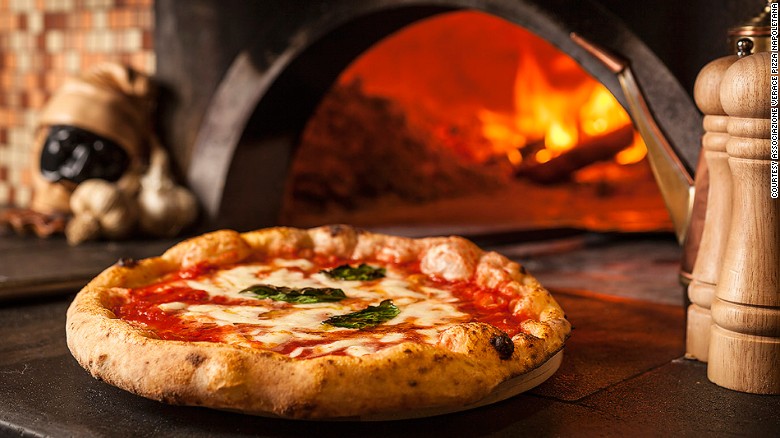Interestingly, pizza was recently ranked as the food most associated with indicators of addiction, according to a recent study. But what is it specifically about pizza that makes it so universally craved?

Perfect combination of ingredients
"I'm fascinated by the fact that people will eat almost any kind of pizza -- not necessarily the 'best' pizza -- and part of that is the fact that it is the uber selection of ingredients that have fat, sugar and salt, that pleases the amygdala [a set of neurons in the brain] and makes the brain very happy," said Gail Vance Civille, founder and president of Sensory Spectrum, a consulting firm that helps companies, including pizza companies, learn how sensory cues drive consumer perceptions of products. "It delivers on the food matrix that people tend to crave and want, and feeds the brain, which says 'this is just wonderful.' "
"It's the Holy Trinity of crust, cheese and sauce that really accentuates that whole umami thing," said Bill DeJournett, managing editor of PMQ Pizza Magazine. "Cheese is addictive on its own ... and what is better than bread and cheese? And then when you pair with sauce, it takes it to a whole new level, and it's irresistible."
Herbert Stone, a sensory scientist for 50 years, has worked with some of the nation's top pizza companies in order to enhance pizza's appeal to consumers. "That combination, when heated, has enormous appeal," he said. "It's addictive because there is nothing offensive about it. ... There is nothing not to like."
DeJournett added, "no matter what the pizza style is, if you have a pizza in the oven, that pizza will smell great. And it will make you hungry."
Pizza is the No. 1 'addictive' food
pizza was ranked as the food most associated with symptoms of addiction, according to the Yale Food Addiction Scale, a tool that assesses the diagnostic criteria for substance-use disorders in reference to highly processed foods.
The psychological response to pizza's ingredient combinations is partially explained by the fact that highly processed foods like pizza, with added amounts of fat, refined carbohydrates and salt, are most associated with behavioral indicators of addiction, such as loss of control over consumption, cravings and continued consumption despite negative consequences, according to Erica M. Schulte, a doctoral candidate in clinical psychology at the University of Michigan who authored the recent study.
The combination of pizza's ingredients "seem to be especially rewarding and do not occur together in foods found in nature ... and this may contribute to its association with addictive-like eating behaviors," Schulte explained.
Personal preferences
The type of crust or sauce you prefer for your pizza can be very personal. "The thinner crust gives you a bit more crispness ... but some people like having a more bready, chewy pizza to process," Civille said. A richer, more flavorful buffalo mozzarella is a variant as well, as is ricotta cheese.
Toppings can provide texture or flavor contrasts and add to the sensory experience of eating pizza, experts say. "When you add pepperoni or sausage, you are adding a meaty, chewy texture variety, whereas with vegetables, you are adding tremendous amounts of texture contrast to the whole mix," Civille said.
But too many toppings can create a product that is less pizza and more taco. "The everything pizza is a completely different animal, with onions, vegetable and meat. ... It becomes more of a carrier for all of this other sensory stimulation."
There are different regional pizza styles, too. A Chicago-style deep dish pizza is nothing like a New York slice, which is nothing like tavern-style, which has more of a cracker crust, DeJournett explained. And a Detroit-style pizza, a deep dish style with caramelized edges with a real crisp crunch, "is yet a whole different sensory experience."
"Once you start varying off of a classic Neapolitan-style pizza, you incorporate people's preferences ... and it's is a very personal thing," Civille said.
The pizza experience
All of this texture and flavor talk aside, some say the joy and lure of pizza has as much to do with what the experience of eating it represents as its sensory attributes. "It comes down to the feelings you experience when eating pizza with friends or family," DeJournett said.
"When you think of pizza, you think of gathering with friends and family and enjoying a delicious meal or watching a football game. It's a community coming together type of food, and I don't think any other food replicates it like that," he said. "It's a fun food;\, it's portable, and you don't have to sit down and be formal. Pizza is a party!"
